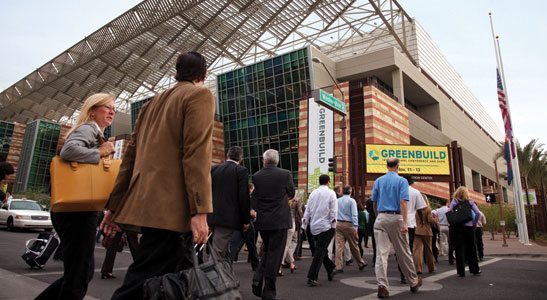Steve Moore, president and CEO of the Greater Phoenix Convention and Visitors Bureau, knows his industry is big business.
“If Arizona’s tourism industry were a publicly traded entity,” he says, “it would be the third-largest company in the state—just behind Avnet and Freeport-McMoran, and just ahead of US Airways and PetSmart.”
Despite the economic downturn and the hit that the state’s tourism industry has taken because of human rights concerns, the numbers back up Moore’s statement. According to a study released this year by Dean Runyan Associates:
* Total direct travel spending in Arizona was $18.3 billion in 2011. Travel spending increased by 5.4 percent in current dollars compared with 2010.
* The tourism industry employs 157,700 people in Arizona. Combined with secondary employment that is generated through this direct travel spending, total job generation for Arizona is nearly 300,000. Tourism-related employment increased in 2011 by 1.7 percent – an addition of 2,700 jobs. This is the first increase in employment since 2006.
* The re-spending of travel-related revenues by businesses and employees supported 136,000 additional jobs outside of the travel industry, with earnings of $5.4 billion.
* The biggest economic boost came from conferences, conventions and business travel, which accounted for more than $6 billion in spending, or the equivalent economic impact of hosting a Super Bowl every month.
“Conventions and meetings are essential to Phoenix’s economy,” Phoenix Mayor Greg Stanton says. “Their attendees stay in our hotels, go shopping at our local businesses and eat in our restaurants, which generates revenue and creates jobs.”
In many ways, experts says, conventions and meetings are a key indicator of the state’s ongoing economic recovery.
“Our industry is in a unique position in that our economic recovery has a direct effect on the recovery of the country as a whole,” says Donna Masiulewicz, president of the Arizona Sunbelt Chapter of Meeting Professionals International. “For most organizations, the first step in such a rebuilding phase is to regroup, reorganize and set out plans for the future. What better place to accomplish these things than at a company-wide event or convention? That means, in essence, that when we are hired to set up these events we are not only helping our own industry get back on financial track but we are serving as a conduit for other organizations to do so as well.”
The gross domestic product of Arizona’s travel industry was $7.3 billion in 2011, according to the Runyan study, making it the state’s top export-oriented industry, ranking above microelectronics, aerospace, and mining.
A big chunk of that revenue comes from meetings and conventions, which account for about two-thirds of the total revenue at Phoenix hotels and resorts, according to Douglas MacKenzie, director of communications for the Greater Phoenix Convention and Visitors Bureau.
“That’s higher than the national average,” MacKenzie says, “because our destination holds great appeal as a meeting destination.”
MacKenzie is quick to point out that when a big event like Major League Baseball’s All-Star Game or the Super Bowl comes to Arizona, the public hears about the economic impact it has on the community because those events get a lot of media attention. But people often don’t realize that big conventions similarly bring thousands—and in some cases tens of thousands —of visitors to Phoenix on a regular basis.
“When a large convention comes to the Phoenix Convention Center, it’s like entire small town moving into downtown for a week,” says Douglas MacKenzie, director of communications for the Greater Phoenix Convention and Visitors Bureau. “And each one of these temporary ‘residents’ directly puts dollars into the economy and generates tax revenue. By a very conservative industry estimate, each convention attendee who comes here spends more than $1,500.”
Meetings not only play a critical role in Scottsdale’s $3 billion tourism industry, according to Kelli Blubaum, vice president of Convention Sales & Services at the Scottsdale Convention & Visitors Bureau, they are economic catalysts that extend beyond the singular event.
“Meetings and events not only help fill thousands of resort and hotel room nights each year, but also provide an opportunity to introduce new visitors and business decision makers to the area,’ she says. “These events often lead to repeat visitors and even economic development opportunities for the city.”
Scottsdale Mayor W.J. “Jim” Lane says that meetings and conventions sometimes open the attracting new industry to Arizona.
“Sometimes, people who get a taste for Scottsdale end up buying a home here, or even moving a business here,” Lane says. “In fact, (convention-goers) may represent larger groups and businesses who may ultimately do more business in Scottsdale based on an initial stay here.”
MacKenzie says Arizona’s robust meeting and convention industry brings people into the state who might not otherwise be exposed to the benefits of doing business in Arizona.
“Many conventions and corporate meetings deliver to our doorstep the very manufacturing and knowledge industries economic developers want to attract to the city,” MacKenzie says.
And while meetings and conventions represent about one-third of the tourism revenue in Tucson, city officials have used their success as an attraction in the meetings industry to attract more revenue in the future.
“Many of Tucson’s larger resorts and hotels rely exclusively on group business to maintain occupancy and revenue throughout the year,” says Graeme Hughes, director of convention sales for the Metropolitan Tucson Convention and Visitors Bureau. “We are also very successful in converting meetings attendees into leisure visitors.”
Since 2008 and 2009 — the low point for Arizona tourism in the wake of the economic downturn — tourism-related tax revenue has risen across the state and as much as 60 percent in some regions of Arizona.
“The hospitality industry is a primary driver of the Arizona economy,” says Andy Ernst, regional vice president of Robert Half International, a professional staffing and consulting service. “We anticipate that Arizona will continue to experience healthy growth in the coming years as hotel occupancy continues to rise, and business comes back to the state.”
With a bright financial outlook for the meeting and convention industry nationally, experts expect Arizona to ride the momentum.
“At this point, Arizona is positioned to follow the national trend,” Hughes says. “As the economy improves, travel increases. Organizations will soon be willing to reinvest in the positive outcomes that meetings and conventions provide.”
The groups that met at the Phoenix Convention Center in 2011 accounted for more than 240,000 attendees and $350 million in estimated direct spending, according the MacKenzie. That surpassed the previous year’s direct-spend total by nearly $10 million, and it reflects the drawing power of the renovated and expanded convention center and additions to downtown, including CityScape.
“However, that’s a performance that likely will not be repeated soon,” MacKenzie says. “The number of convention attendees we’ve booked for 2012 is down 20 percent compared with 2011.”
MacKenzie attributes the decline to the recession, a 30 percent cut to the CVB’s budget, the removal of half of our Prop 302 marketing funds, and client backlash from Arizona’s role in the immigration debate, and the “A.I.G. effect,” the tendency of corporations to cut down on lavish expenditures and luxuries in areas like travel and meetings to avoid appearing wasteful in times of economic downturn. The A.I.G. effect became a reality because of the negative publicity generated by some practices of the insurance giant A.I.G.
“Keep in mind: This year’s and next year’s conventions were booked from 2008 to 2010, during the depths of the recession and during the first year of the immigration debate,” MacKenzie says. “The typical booking window for citywide conventions is two to five years out—i.e., a group usually selects the site of its 2012 convention by 2010.”
Despite some challenges, experts agree that the long-term appeal of Arizona should allow the state’s convention and meeting industry to fluorish.
“We’re seeing an increase in business from third-party planners, and the corporate segment is strengthening as well,” Blubaum points out. “Plus, healthcare continues to be a strong segment. Canada also is a growing market for Scottsdale, which is why we are increasing our efforts to drive additional meetings business from key Canadian cities.”




